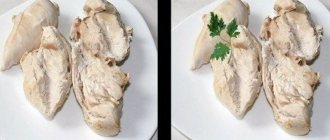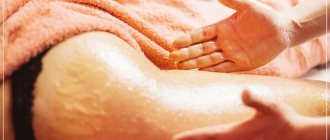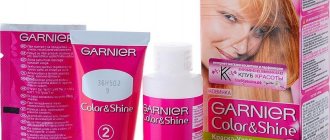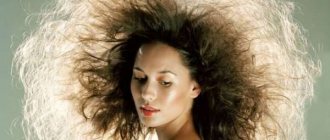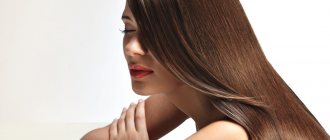One of the very first types of combs were those made from natural materials.
At first it was wood, but such products are not suitable for thin hair, as they tear and deform it.
Somewhat later, models began to be made that used natural boar bristles, horsehair, and whalebone.
What is the difference between a comb with natural bristles and artificial ones?
The main difference between natural bristles and their artificial counterpart is the properties of the materials used. If the first removes static electricity and does not deform even very thin hair, then with the second everything happens exactly the opposite. There are many other differences as well. For example, the softness of natural bristles is much higher than that of its artificial counterpart.
Visually distinguishing natural and artificial bristles from each other can sometimes be quite difficult, especially when it comes to high-quality fakes. And yet there is a way that is guaranteed to help do this. You need to pull out a few fibers and set them on fire. Synthetics will roll into a ball, and during combustion will emit a characteristic unpleasant odor.
The best comb with natural bristles – how to choose?
Now the market is quite filled with products in this category. Moreover, there is a significant selection of products of both domestic and foreign production.
Many customers prefer foreign brands. In fact, when buying a comb with natural bristles, you must first of all pay attention to how high-quality the material was used in the production of the product and only then to the brand.
Pig bristles
Most often we are talking about wild boar bristles. It is quite hard to the touch, but at the same time it can be tilted to the side quite easily with the pressure of a finger. This comb is well suited for people with thin, split hair and those with rather sparse hair.
It is very difficult to comb curly strands with it. The situation is also the same in situations where the hair is thick and quite thick. In this case, a comb with natural pork bristles can be used for aromatherapy, but it is unlikely that you will be able to comb the strands properly.
For daily use, this product is ideal for people with short hair.
Important to remember! A comb with natural bristles should be washed thoroughly after each comb. To do this, you need to use a soap solution to which ammonia has been added (pour 2 tablespoons per 1 liter). You can comb out debris and hairs from the bristles using a fine-toothed comb. If you do this less often than once every 2-3 days, then there is a high probability of bacteria developing on the pile.
Mixed bristles
Most often, mixed bristles mean the strengthening of natural material with inserts from an artificial analogue. This move allows you to solve the problem of removing static electricity and high-quality combing of hair.
However, such products lack one of the main advantages of combs made of natural material: when massaging the scalp, they can scratch it. Also, with their help, the distribution of natural secretions of the sebaceous glands along the entire length of the strands is much worse.
Suitable for all hair types.
Horsehair
Horsehair is softer than boar bristles, so combs made with it are most often reinforced with artificial inserts.
This product does a good job of removing static electricity. With regular combing, hair becomes softer and silkier. The big advantage is that even with inserts, when combing your hair, hair damage is minimal. No new split ends appear.
Combs, the working surface of which is made only of horsehair, are well suited for children and people with thin hair. Others can use them for aromatherapy.
How to use a highlighting comb?
How to choose electric curlers? Read here
How to choose the best hair dryer comb? https://klublady.ru/volosy/pricheski-i-strizhki/fen-rascheska.html
Whalebone
In fact, whalebone is not such a thing. In fact, it is a horny plate, the inner side of which is split into many thin bristles. It turns out that whalebone itself is very strong and tough, and it’s not for nothing that it has been used for centuries in the manufacture of corsets.
The combing effect can be compared to using a regular comb. The distribution of the natural secretion of the sebaceous glands along the entire length of the hair is carried out with the same quality as when using products made from natural pork bristles.
Such combs are recommended for people with curls and thick hair.
Important to remember! Combs with natural bristles distribute the secretion of the sebaceous glands along the entire length of the hair. Therefore, they are not recommended for people with increased secretion, since in this case, after combing, the curls will appear greasy.
History of the comb
Combs have been used by humans since time immemorial and their origins date back to the Stone Age when man first created a hard, toothed tool to groom his hair. Interestingly, the comb's original use was not limited to hair care and straightening. It was also used as decorative accessories.
Combs are made from a variety of materials, including wood and plastic. Nowadays, many different types of combs are made for different purposes, such as simple combs, hot combs, and even anti-parasite combs.
The very first combs were made from the bones of predatory animals, ivory and wood; later silver, brass and tin were used to make them. The most famous of the ancient combs was found in Sweden and dates back to 2500 BC. The Scandinavians used them not only for hair care, but also as a decorative element, in those days they were one of the main accessories. Combs dating from 1800-500 have also been found. BC, which were made of bronze and bone and were given as “gifts” for burial. At the beginning of the Iron Age (500 BC - 400 AD), combs were made of iron, were wider and had a crescent shape. At the end of the Iron Age (400 - 1050 AD), narrower hair accessories were made. At the same time, the appearance of double combs was noted: with wide and sparse teeth.
It was in the Middle Ages (14th century) that the comb underwent its main improvement. At this time, they began to make combs very reminiscent of our modern ones. Combs made of wood or bone, made from deer or elk antlers, began to be made using a comb - the name given to the tool for making combs. Tortoise shell and animal horns were used to make combs from the early to mid-19th century. The advantage of using tortoise shell and antlers was that these materials could be heated to become soft and easily shaped. Feathers from the Chinese kingfisher were also used to create combs.
Around the 17th century, Japanese women began to decorate their hair with combs trimmed with silk flowers, called kanzashi (kanzashi). On the website kanzashi-kirov.ru you can order original kanzashi jewelry at affordable prices. We present to your attention a whole gallery of exclusive accessories for hair decoration. You can also order kanzashi from a picture from the Internet. An unfading flower made using the kanzashi technique will become a bright addition to your image.
In 1869, two brothers, Isaiah and John Hiatt, conducted an experiment in search of an alternative to ivory. They developed a plastic material called celluloid using nitrocellulose and camphor as the main ingredients. Now combs were made quickly and at much lower cost. This led to the formation of a completely new industry in the history of combs. Celluloid came at the right time, as tortoiseshell and ivory were becoming more and more expensive materials to use.
In 1993, the Antique Comb Collectors Club was formed to collect vintage combs and now boasts a fascinating collection of combs and combs that are many hundreds of years old.
Natural bristle hairbrush: pros and cons
We can highlight the following advantages that hair combs with natural bristles have:
- Each procedure is comparable to a full scalp massage.
- Natural bristles very carefully and gently comb tangled hair without damaging it.
- Within a few days, your curls will look shinier and healthier, and will feel softer to the touch.
However, we should not forget that combs with natural bristles also have a number of disadvantages, the most significant being the following:
- It is extremely difficult to completely detangle thick curls with their help.
- They need frequent washing and cleaning. In fact, this must be done after each use.
- Such products are much more expensive than their artificial counterparts.
Which comb is good for hair
When choosing a wooden accessory, you should keep in mind that the material from which it is made can have a healing effect. The main thing is to choose the properties you need:
- ash - stimulates growth;
- sandalwood - relieves irritation;
- juniper - calms the nerves;
- bamboo - heals wounds;
- birch - prevents dandruff;
- fruit trees - charge with positivity.
A wooden comb will give you pleasure when using it if you meet a number of requirements when choosing. The surface should not have a varnish coating, but should be smooth and pleasant to the touch, then the hair will not break, snag or split. A hardwood comb will last longer if you consider:
- quality of material;
- no nicks or cracks;
- inadmissibility of sharp edges and corners;
- number, size, density of teeth.
Hair comb with natural bristles - useful tips
Proper care of your hair is very important, since the perception of a person’s appearance directly depends on it. To create the perfect look, many women use combs with natural bristles. You can buy them in specialized online stores that sell professional tools for the work of hairdressers.
Women are often concerned about the question of whether a comb with natural bristles is suitable for colored hair? The answer is yes. This comb will make your curls softer and shinier. It does not damage the hair structure. Those with curly hair should prefer products in which natural bristles are reinforced with artificial material or combs with whalebone.
Which comb is best for hair? Care tips.
What are the benefits of Macadamia combs? Read here.
Benefits of the Tangle Teezer miracle comb - https://klublady.ru/volosy/uxod-za-volosami/tangl-tizer-chudo-rascheska-dlya-lyubyx-volos.html
Hair comb with natural bristles: reviews from readers
Alla Grishina (Moscow). I have long, thick hair, so I was very responsible when choosing a comb with natural bristles. I chose the Titania Professional Haircare model. It has natural bristles reinforced with nylon threads, so I can comb my hair instead of just stroking it on top. Nadezhda Sinitsyna (Eagle). After each wash, my thin hair resembled a mop with a huge number of tangles. The hairdresser advised me to buy a Hairway comb with natural bristles. It suited me perfectly. She gently and carefully detangles my curls without damaging their structure.
Anastasia Kopylova (Ekaterinburg). My husband gave me a gift - a comb with natural bristles Mason Pearson. I already had a similar comb, only from a different manufacturer. I really liked the gift for its stylish appearance and good workmanship. During use, I did not notice a significant difference between the expensive and cheaper analogues.
Kira Ivanova (St. Petersburg). A friend gave me a Dewal natural bristle comb for my birthday. Outwardly, it resembles a massage brush, only instead of plastic teeth, it has 9 rows of bristles. I really liked the gift. Within a week my hair became shinier and silkier. Even my boyfriend noticed this.
Irina Karpova (Belgorod). I bought the Florans Collection natural bristle brush because it was very affordable. She almost completely met my expectations. Yes, it does its job well, but due to the short handle, the whole process does not bring any pleasure. So I decided to change it to another model.
Features of care
Natural wood is a very demanding material that requires careful care. Combs do not like excessive heat, so they should be stored away from heaters, radiators and direct sunlight.
Moisture is also not on the list of their “favorite friends”; it causes the instruments to begin to lose their original shape, and when dry, chips and nicks appear on them. It is best to store the accessory in a nightstand at room temperature.
If your hair is too oily, wipe your hair with an alcohol wipe after each use. You should also remove any remaining hair after leaving: if you use a brush, pick up the lump with a sharp object and pull it towards you - this way you can remove the entire layer of strands at once.
Wooden products need to be washed regularly, this is done at least once a month, but not more than once a week, so as not to damage the body and teeth. The procedure is quite simple: dilute shampoo in warm water, rinse the comb well to remove all dirt and grease, rinse off the remaining product under the tap, dry the accessory with a terry towel.
Following these simple rules will help you get the maximum benefit from combing and extend the life of the tool.
